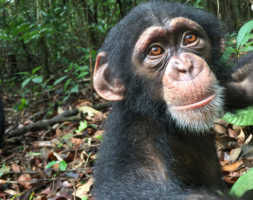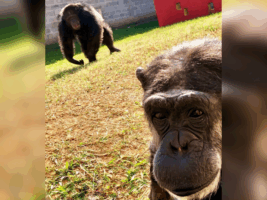Sanctuaries or showbiz: what’s the future of zoos?

While most zoos in the US and Europe have moved away from cramped cages the tension between displaying captive animals and a scientific purpose persists.
By Oliver Milman, The Guardian
It hasn’t been a great month for zoos and aquariums. Seaworld finally bowed to pressure to end its captive orca breeding program, three US zoos were criticized for secretly flying 18 elephants out of Africa and zoo keepers in Calgary accidentally killed an otter with a pair of pants, adding to a list of mistakes that includes giving a knife to a gorilla.
These unrelated events have provoked questions about the modern role of zoos and what, if any, future they should have. While most zoos in the US and Europe have done away with cramped, empty, concrete dungeons and embraced a message of conservation, the difference between the vast natural ranges of elephants, whales and polar bears and their zoo environments remains stark.
“Animals collected from the wild are doomed to a rather dull life – a sort of life they don’t deserve,” said Priscilla Feral, president of Friends of Animals. The not-for-profit group launched a legal action to stop three US zoos from importing 18 elephants from Swaziland, only, as Feral puts it, for the trunked beasts to be “whisked away at midnight” before the court hearing. The zoos maintain this was for the elephants’ welfare.
“Dallas zoo will take several elephants and put them in an 11-acre area. Omaha will put them in four acres. How on Earth will they divide that space? It’s rather pitiful. A zoo isn’t an ecosystem. If zoos could breed elephants and whales properly, they wouldn’t have to steal them from nature. It’s nefarious to do that and then confine them in a tourist trap.”
While some activists want zoos shut down completely, Feral favors a transition to a “sanctuary” arrangement that triages at-risk animals before releasing them back to the wild. But others argue this overlooks important conservation work that zoos have thrown themselves into – not to mention the unhappy fact that species’ natural habitat is rapidly vanishing anyway.
“Zoos have tried to change their mission and some have done that better than others,” said Daniel Blumstein, chairman of UCLA’s department of ecology and evolutionary biology. “The onus is on zoos to show an educational mission, to have a potential to do more than entertainment.
“Often, the only people who know about wildlife diseases or breeding animals are zoo veterinarians. And interactions with animals in an increasingly urbanized society is important. I have mixed feelings about zoos but, if done right, they can play a crucial role.”
Zoos’ shift from places to gleefully ogle a tormented animal in a tiny cage to more thoughtful, aware spaces may be relatively recent, but conservation work has been under way for a while. In the early 1900s, for example, Bronx zoo washelping breed bison to help replenish a species that had been virtually wiped out in America’s west.
The restoration effort is far more systematic these days. San Diego zoo, considered one of the world’s best, has 132 conservation projects in 62 countries, helping bolster an imperiled population of condors, monitor the fortunes of gorillas in Cameroon and tackle a deadly facial cancer ravaging Tasmanian devils.
While these efforts may not be as well-known as, say, the slaughtering of an unwanted giraffe and feeding it to a lion in front of onlookers, they form a far truer picture of modern zoos, according to the Association of Zoos and Aquariums(AZA). The 229 zoos accredited by AZA, the global peak body, spend more than $160m on conservation programs each year.
“We are seeing an evolution of people’s thinking of what a modern zoological institution should be,” said Rob Vernon, spokesman for AZA. “In the past 10 to 15 years we’ve seen a dramatic shift in how AZA members approach the public display of animals. We see much larger, more open exhibits based upon modern science.”
Vernon said that consistent evaluations are made on animal welfare, hence, he said, the Seaworld decision to phase out orca breeding and killer whale shows. Plus, zoos remain popular – a total of 62 million people visited a US zoo in 2015, with numbers growing slightly over the past decade.
But zoos find themselves in a bind. In order to maintain this popularity – and income – they have to cram in as many charismatic, big-draw species as possible into a limited space. This commercial need can clash with the desire to recreate natural environments and can even, as studies have shown, diminish the actual proportion of endangered species under their care.
Most large zoos are located in wealthy cities in Europe and North America, a long distance from the tropical conditions favored by many of the animals in their charge. This incongruity, highlighted by the signs of stress witnessed in some captive animals, demonstrates that whatever improvements are made to zoos, they will never quite replicate home. The ongoing retirement of fauna from circuses is a clear indication of where public opinion lies.
“If you wanted to design a zoo for conservation, that would be very different from an entertainment zoo,” said Ben Minteer, an ethicist at Arizona State University. “A lot of zoos are making a hard pivot to conservation but there’s a tension there. The critics will say that it’s not enough, that if it is an ark, it’s not a big enough ark.
“There is a band of the public that is anti-zoo, that feels we have no right to imprison animals. And there are those who feel that certain animals like orcas shouldn’t be in zoos. But at the same time zoos remain remarkably popular, trusted institutions. I think that tension will always be there. It’s complicated.”
While zoos’ detractors are growing more vocal and have been buoyed by some recent victories, it’s likely that zoos will evolve rather than die off. A possible model for more park-like zoos is Denmark’s “Zootopia” – a venue where animals roam free, liberated from cages and tanks, while visitors spy upon them from unobtrusive pods buried underground.
“This is a future of a zoo as an immersive experience,” said Minteer. “Zoos have gone through a series of revolutions to get away from artificial environments and the Zootopia idea is the latest step forward with that.”
Perhaps one sentiment pro- and anti-zoo forces can agree on is that the world would be greatly diminished if zoos were the only place to see unusual animals. With the world facing its sixth great extinction, conservation efforts, provided by zoos or others, are needed more than ever.
“We can see change in zoos over the next 20 years but I really hope there’s something left of the wild in 20 years too,” said Feral. “I hope the last elephant, or the last giraffe, isn’t the resident of a zoo. If you respect animals and nature, you have to secure their habitat.”
Source: http://www.theguardian.com/world/2016/mar/23/sanctuaries-or-showbiz-zoos-struggle-to-balance-conservation-and-entertainment

 Español
Español
 Português
Português








